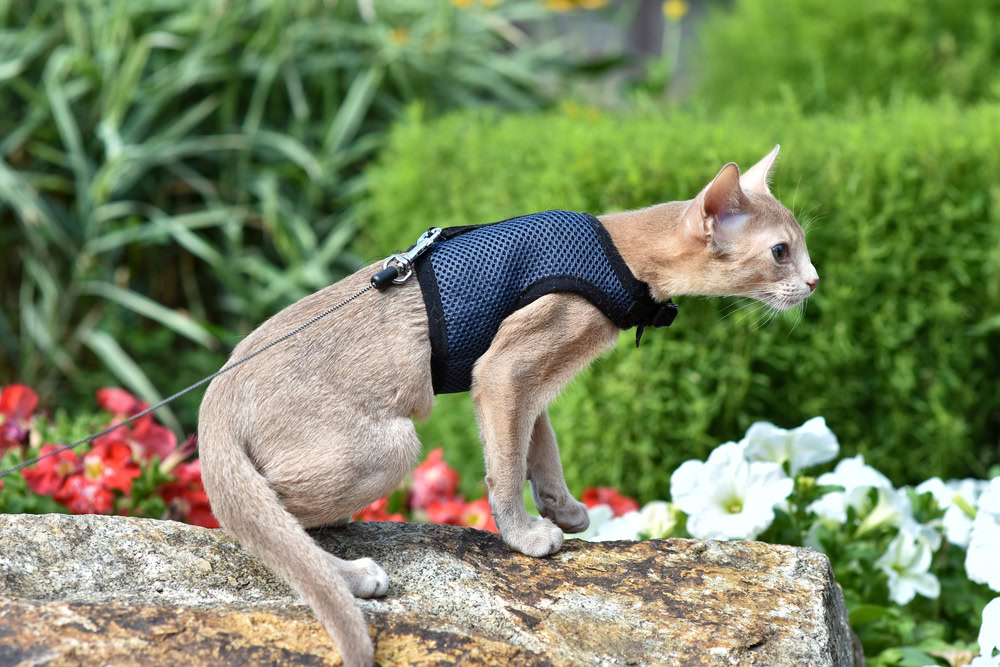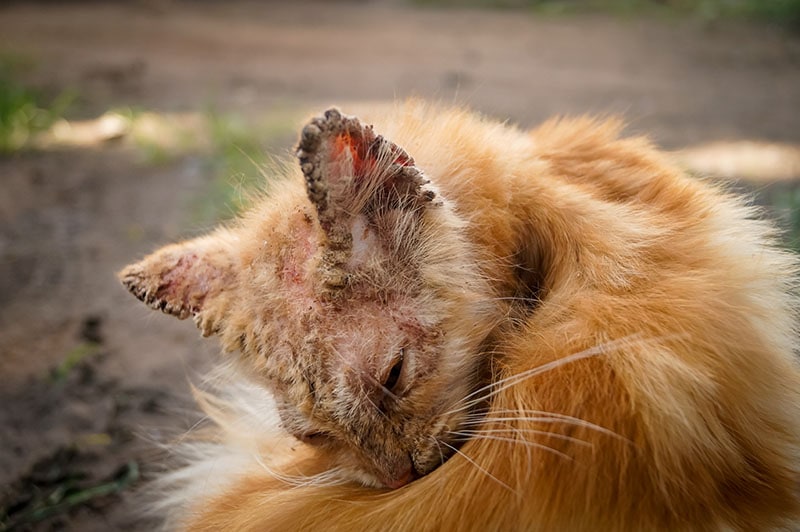VET APPROVED

The information is current and up-to-date in accordance with the latest veterinarian research.
Learn more »Click to Skip Ahead
Trigger Warning: The study cited below involves experiments done on cats that some readers may find distressing. Please proceed with caution.
Indoor cats live longer and are far safer than those that spend much or all of their lives outside, being protected from many illnesses and injuries. However, this does come at a cost, as they are also sheltered from many of the things that can only be experienced in the outside world. Fortunately, there are some different options you can implement to help your indoor kitty get a taste of the world outside while still keeping them safe.
Structures like window boxes, cat enclosures, and external walkways are great for giving your cats some fresh air and allowing them to engage in some wildlife watching without having a negative impact on the ecosystem. For those who want to give their cat a little more freedom, there is the option of walking them on a leash.
If you’ve ever tried to put a harness on a cat, you will know that they are not always very well received. Some cats will grumble and yowl, some will run, freeze, or hug the walls, and many cats will fall over when they have a harness on. This might seem worrying at first, especially when some cats lie on their sides and refuse to move. For many pet owners, it’s hard to resist having a giggle at their poor cat’s plight (completely understandable).
Some cats find harnesses very stressful, and we should never force them to wear one, but in most cases, if you are patient and allow your cat time to adjust, they will get used to this new accessory, and you will be able to teach them to walk on a leash.
There have been many different theories about why cats fall over when we put a harness on them, but we’ve managed to track down the truth. Read on to learn more.

Why Do Cats Fall Over When They Have a Harness On?
Several different theories have been proposed to explain this quirky behavior, including:
Fight, Flight, or Freeze
When confronted with an enemy or threat, the sympathetic nervous system triggers a flood of adrenalin to prepare the body to fight or flee, or in some cases, freeze. Some people believe that cats falling over in a harness is part of the ‘freeze’ behavior when faced with an unknown threat.
Pressure Points
This theory suggests that the positioning of a cat harness triggers a reflex response that kittens experience when picked up by their mothers. Some have also theorized that the pressure of the harness may cause a cat to ‘play dead’ as though they have been picked up by a predator.
Poorly Fitting Harness
A harness that is too tight will restrict movement, and even put pressure on the chest, which could account for a cat’s floppy reaction.
Finding a great cat harness can be tricky. Our favorite is Hepper's Cat Harness & Leash Set, which includes a soft, adjustable velvet harness and a premium climbing rope leash.
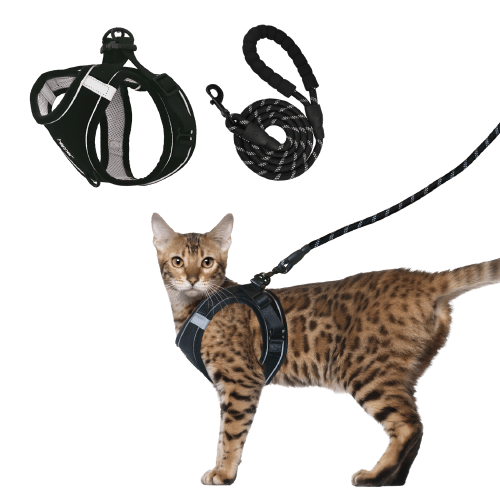
With safety features like quick-release buckles, reflective stripes, and reinforced stitching, you'll love this machine-washable harness as much as your cat will!
At PangoVet, we've admired Hepper for many years, and decided to take a controlling ownership interest so that we could benefit from the outstanding designs of this cool company!
While none of these theories have been definitively disproven, we believe we have found the real reason.
The study described below was part of medical research into human spinal nerve function and injury. It was not performed to address the question of cats and harnesses. We have used the results of this study to help understand how cats are affected by wearing a harness. Whilst the findings of this study are interesting and have implications in the treatment of certain neurological and spinal conditions, the content of the paper may be distressing to some of our readers as it does involve animal experimentation. Although the experiments were performed following the guidelines set out by the European Community Council Directive, they are not methods that we at Catster support or condone.
What Does The Science Say?
Believe it or not, there is actually a scientific explanation for this seemingly comical reaction to a harness, and it also explains why cats will eventually get used to wearing one.
A 2012 experimental study showed that cats whose higher brain functions had been surgically inhibited (including vision, hearing, and vestibular systems), were able to walk while maintaining balance and positioning when the nerves controlling locomotion were electronically stimulated. What this rather unpleasant study demonstrated is that, in addition to conscious control of the body’s movements based on sight, hearing, vestibular system (part of the inner ear that controls balance), and sensation, feline balance and coordination are significantly influenced, even controlled, by unconscious somatosensory (sensations of touch, vibration, temperature, air movement, etc) feedback.
It showed that the feline body can use input from its environment to orient posture and gait without the need for this information to be processed by the brain. This accounts for the speed with which cats can react and move, their ability to balance on seemingly impossibly narrow surfaces, and how cats ‘always land on their feet’. Most animals need to think before they leap, but the cat’s body can start to react without the delay of thinking. It also explains why cats can very easily adjust to a loss of vision, able to walk, even jump, with confidence, like Svetlana, the blind cat.

In a nutshell, cats can walk in a straight line without a brain (a bit like some humans I know 😜).
How Does A Harness Affect This?
This unconscious somatosensory feedback system acts almost like a 6th sense—no, I’m not talking about the ability to see ghosts (although some cats behave as though they can!). When we pop a harness onto an unsuspecting feline, we are suddenly obscuring that sense, almost like putting a blindfold on, which is going to be disorienting and affect their sense of balance and spatial awareness.
But, just like a blind feline will gradually adjust to their lack of visual input, your cat will become accustomed to how a harness affects their somatosensory input. Cats are nothing if not adaptable!

How To Get Your Cat Used To Wearing A Harness
Like most things, the easiest way to harness train a cat is to start when they are young and still getting used to the world. However, it is absolutely possible to get your adult, even elderly cat, used to wearing a harness relatively quickly, following these simple steps.
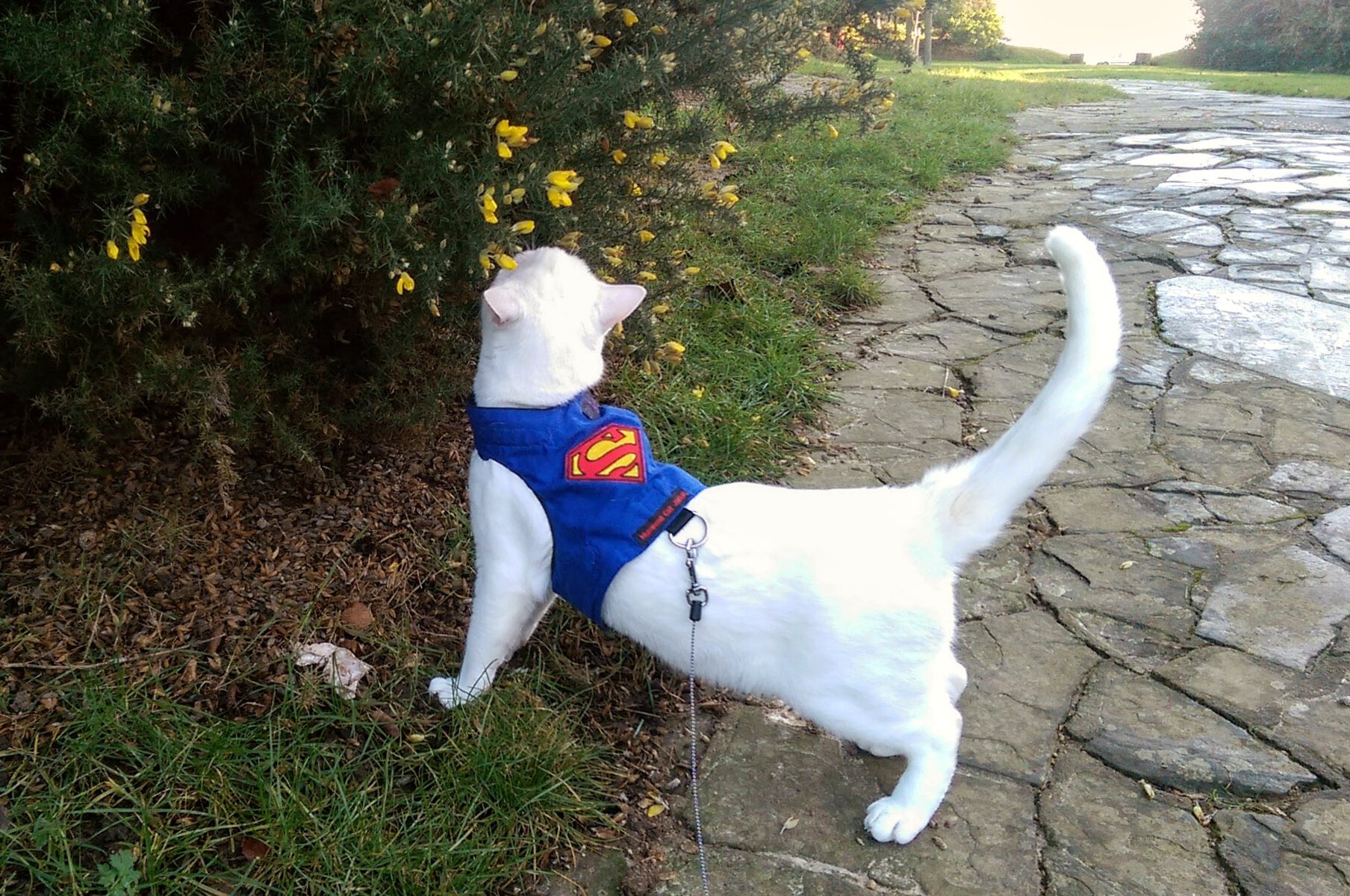
1. Create a positive association
Place the harness beside your cat as you give them treats or catnip. You can even rub catnip, calming pheromones, or calming scents into the harness to make it more appealing (N.B., only ~60% of cats react to catnip).
2. Be confident
Familiarize yourself with the design of the harness before you put it on your cat. If you start fumbling with the clasps or are nervous, your cat will be more inclined to get away from it.
3. Put the harness on for 5 minutes and ignore your cat (sort of)
Some cats will take to wearing a harness like a duck to water, but others may roll, run, or of course, fall over. Unless your cat is at risk of injuring themselves or is really distressed, leave the harness on for around 5 minutes, keeping an eye on them but otherwise allowing them to work things out on their own.
4. DO NOT LAUGH!
Cats are proud and sensitive creatures who do not take kindly to being laughed at, so keep your mirth to yourself, no matter how hard it may be.
5. Reward your cat and remove the harness
After 5 minutes (longer if your cat is tolerating the harness well) give your cat a treat or a fuss, and remove the harness.
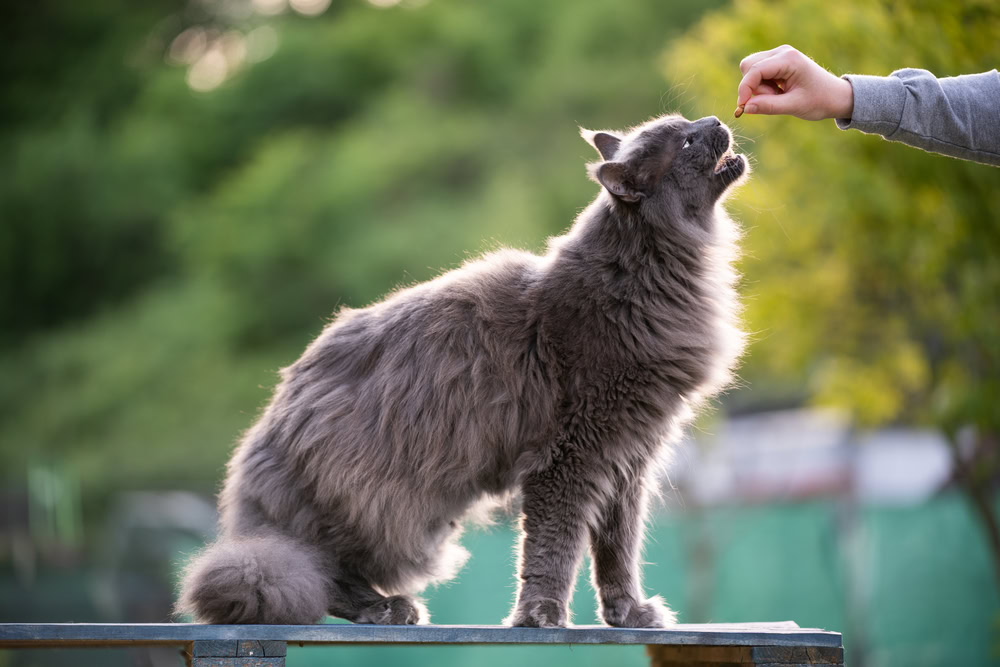
6. Next time leave it on for 10 minutes
Don’t leave too long an interval between sessions, and you can do more than one in a day, provided your cat isn’t getting stressed.
7. Keep increasing by 5 minutes until they are walking without difficulty or hesitation
For older cats, this may take numerous sessions, but most cats will be getting the hang of things by the third or fourth time.
8. Leave the harness on for extended periods but only under supervision
Allow them to explore, eat, and sleep with the harness on so they become comfortable doing everything they would normally do while wearing it. But make sure you are watching them to ensure they don’t get tangled.
9. Attach a short leash and let them get used to the added weight
A good option is to gather the leash and tie it up so it is attached to the harness but not dragging along the floor. I do not recommend using retractable leads as cats are more likely than dogs to get these tangled, particularly if they panic.
10. Your cat should be comfortable and confident to walk in their harness
By now, your cat should be used to their harness and you can start to walk them on the leash. Do this indoors at first until you are happy that they aren’t able to escape before venturing out into the world.

Hot Tips & Important Bits
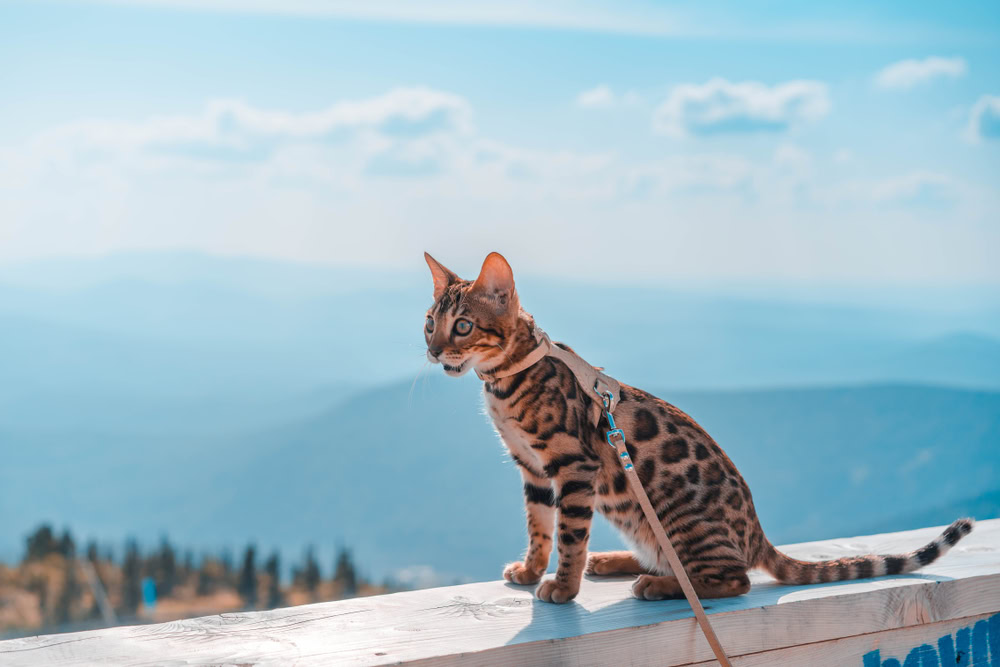
- Cat harnesses are different from dog harnesses, and need to fit well. Cats are master escape artists and contortionists, so a loose fit or thin straps will be no obstacle to a determined kitty. Cat harnesses should be more like a jacket that distributes pressure evenly over the torso, and is difficult to wriggle out of.
- Most cats won’t walk on a leash like a dog, and more often than not you will be relegated to standing around at the end of the leash like a gooseberry while your cat explores. Don’t be tempted to get out your phone and start scrolling – distraction can lead to disaster.
- Cats are more likely to panic and try to flee if they feel threatened, and a terrified cat can be painful and dangerous to hold. Some cats are super confident explorers, while others will be safer staying close to home. It’s a great idea to bring a cat carrier along with you in case you need to get your cat to safety. A style is ideal for taking on the go.
- A hungry cat is a food-motivated cat, so always aim to do any training before a meal, not after.
- Make sure your cat’s microchip details are up to date in case of escape.
- Steer clear of trees! Your cat will no doubt love to explore new heights, but once that leash is wrapped around a branch, you’re in trouble.
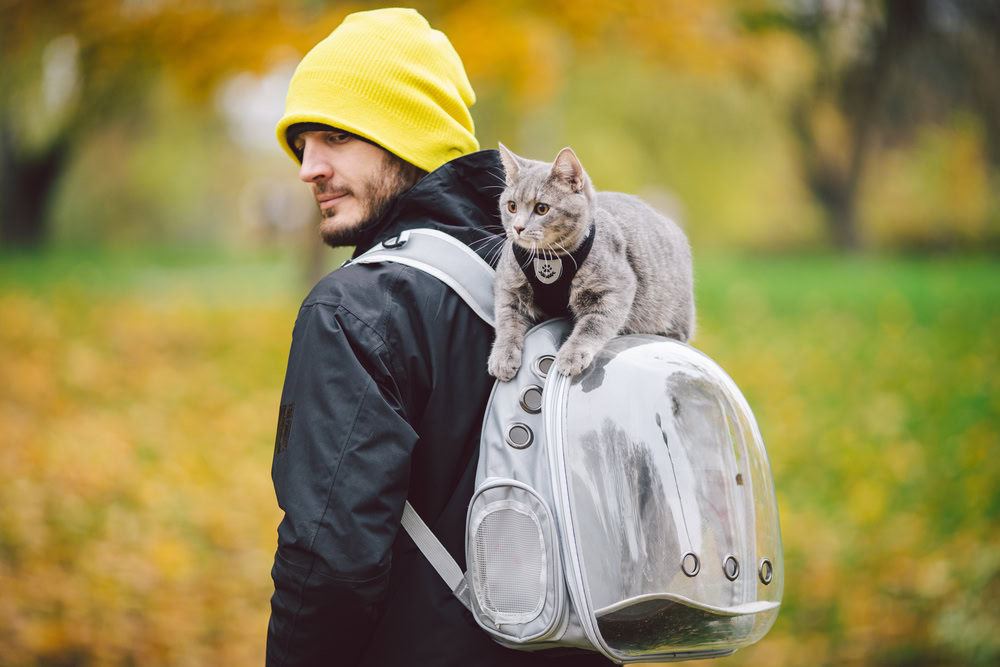

Final Thoughts
Although it may seem a bit worrying at first, if not a little bit comical, it is quite common for cats to fall over, hug the walls, or refuse to move when you first introduce them to wearing a harness. Research has shown that feline coordination, locomotion, and balance rely, not just on information processed by the brain, but on somatosensory feedback the body receives from the environment that allows the body to move and orient itself without conscious thought. When we place a harness on a cat, this ability is compromised, leaving cats feeling disoriented and out of balance. In most cases, cats will adjust to this change the longer they wear the harness, but it should not be forced upon cats that are becoming distressed.
Taking time to slowly introduce your cat to their harness, as well as making sure you have a great style and fit, will help you and your feline friend get the most out of exploring their world safely.
Featured Image Credit: Akifyeva S, Shutterstock
